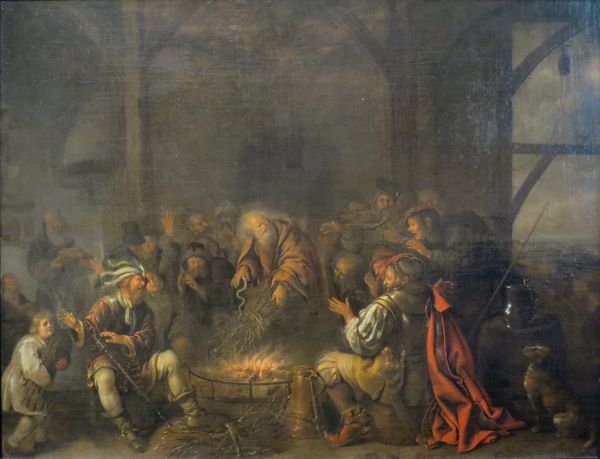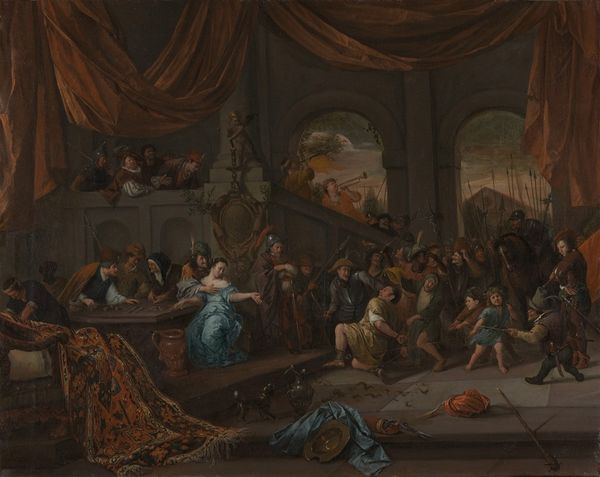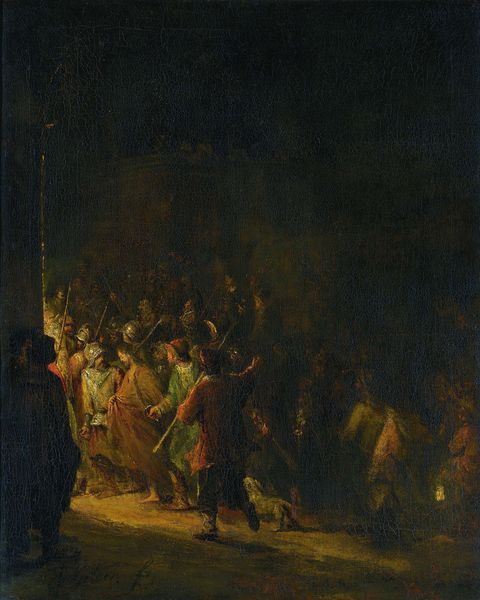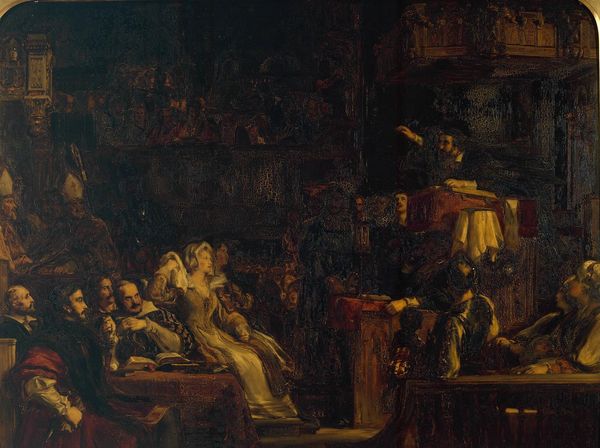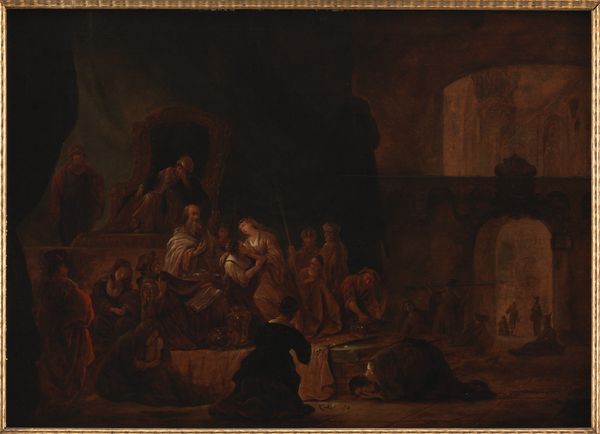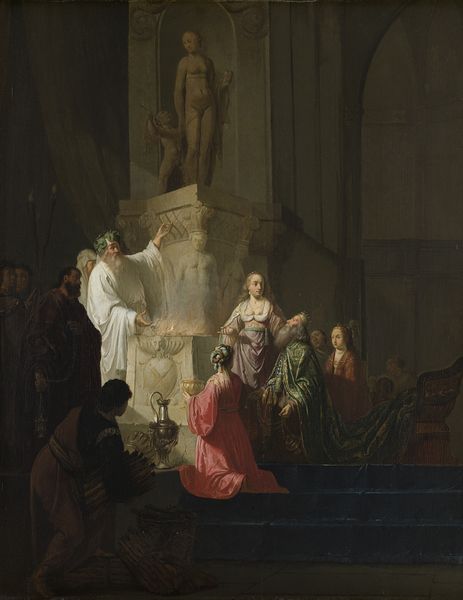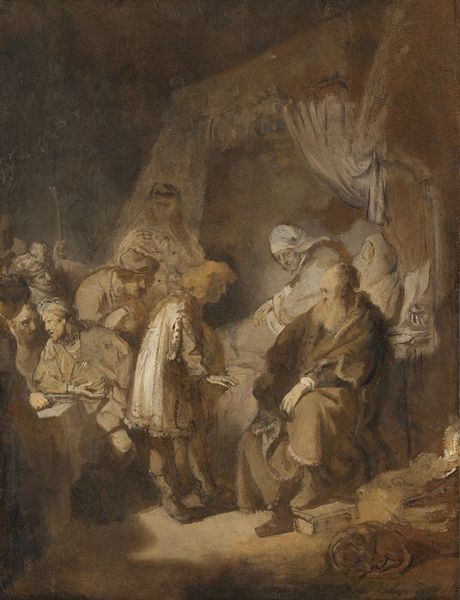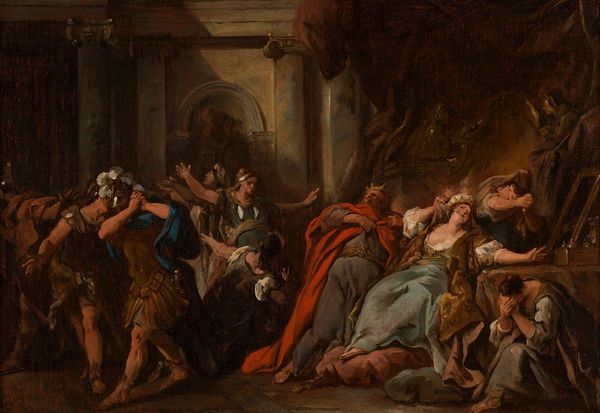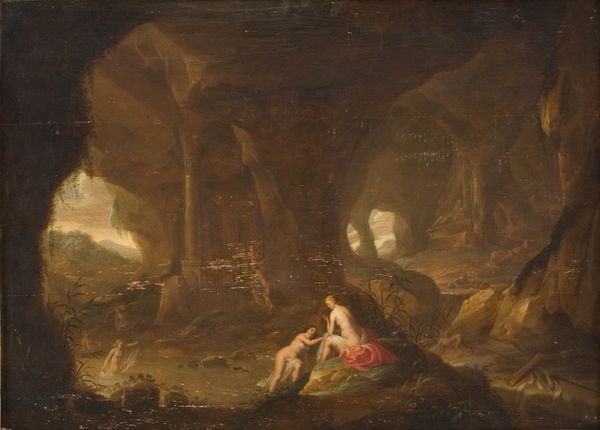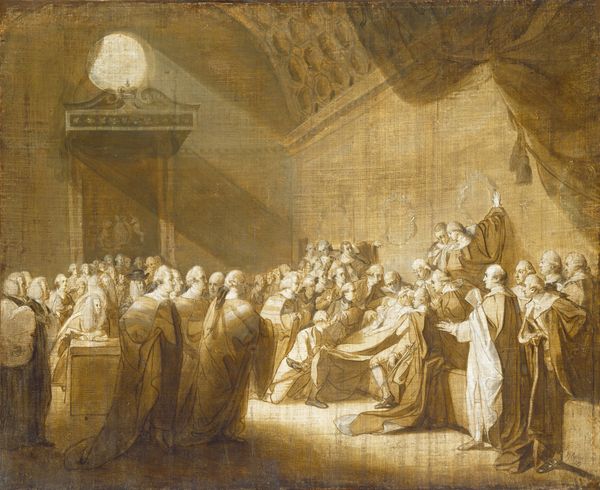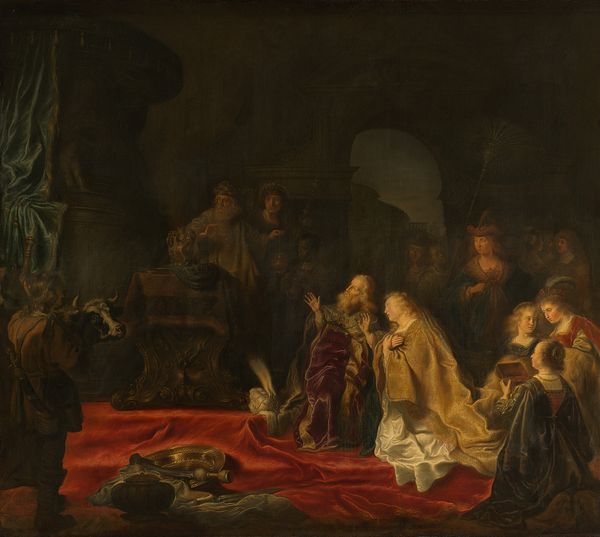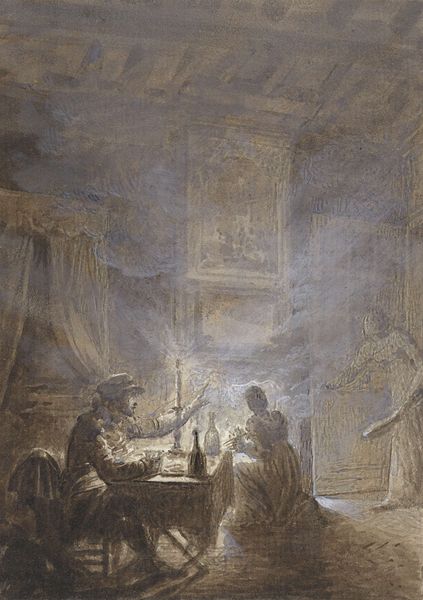
oil-paint
#
portrait
#
baroque
#
oil-paint
#
figuration
#
oil painting
#
genre-painting
#
history-painting
Dimensions: height 73 cm, width 59 cm, depth 9.5 cm
Copyright: Rijks Museum: Open Domain
Curator: Look at this imposing scene, a work by Aert de Gelder, entitled "Christ before Caiaphas," likely painted between 1700 and 1727 using oil on canvas. The architectural setting feels grand, almost overwhelming. Editor: Yes, the vastness and the dramatic lighting really struck me immediately. It feels oppressive. Like a stage set for injustice. There is something deliberately unsettling about how Christ is almost swallowed by the architecture, by the looming figures in the background. Curator: The theatrical lighting absolutely serves the story. Aert de Gelder, a late student of Rembrandt, clearly employs the master's use of chiaroscuro. See how the figures are illuminated to emphasize the emotional weight of the trial? The strategic illumination invites an empathetic interpretation of innocence besieged by shadowy moral corruption. Editor: Absolutely. The single source of light spotlights Christ as well as the theatrical display of power embodied by Caiaphas. Look at how everyone seated looks away, looks down, or engages with a cynical curiosity. It speaks to how easily institutions become corrupted by dogma and cruelty. Curator: The figures present are incredibly expressive. Their garments communicate a diverse tapestry of symbolic affiliation that creates both familiarity and division; robes, uniforms, turbans all carry their weight in this trial, speaking to identity and tradition. They act as signifiers of social standing and historical allegiance in the face of a trial for the divine. Editor: The historical setting allows Gelder to comment not just on religious persecution but the silencing of marginalized voices throughout history, even to our present. The image invites us to examine the structures and ideologies that enable these moments. I can’t help but to imagine Christ as any body facing the blunt cruelty of any entrenched authoritarian system. Curator: The symbolism and the narrative combine to create an enduring commentary about human justice versus divine justice, echoing across centuries, still finding a resonant chord within the observer today. Editor: I leave with this chilling sensation of a show trial, knowing that no lesson has been learned; power silences the truth, but resistance remains crucial.
Comments
No comments
Be the first to comment and join the conversation on the ultimate creative platform.
